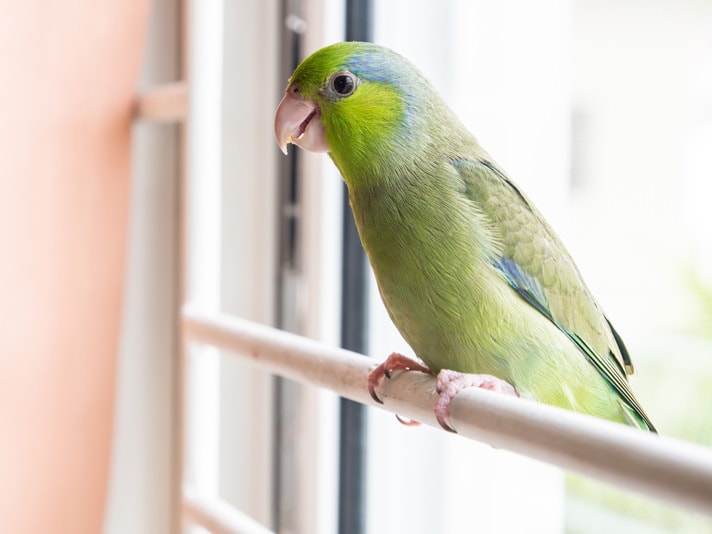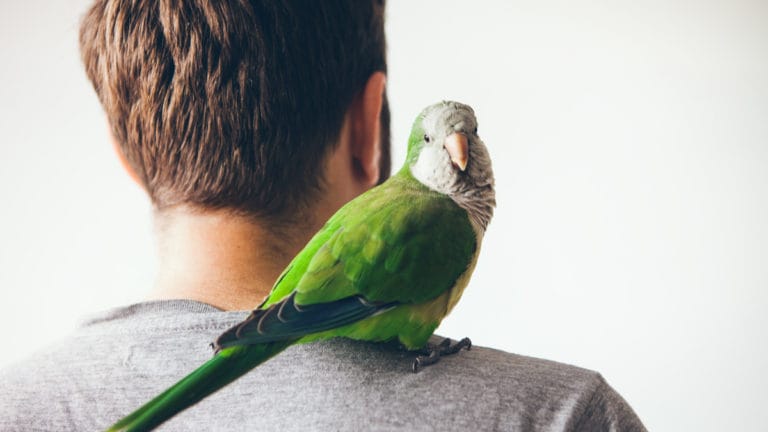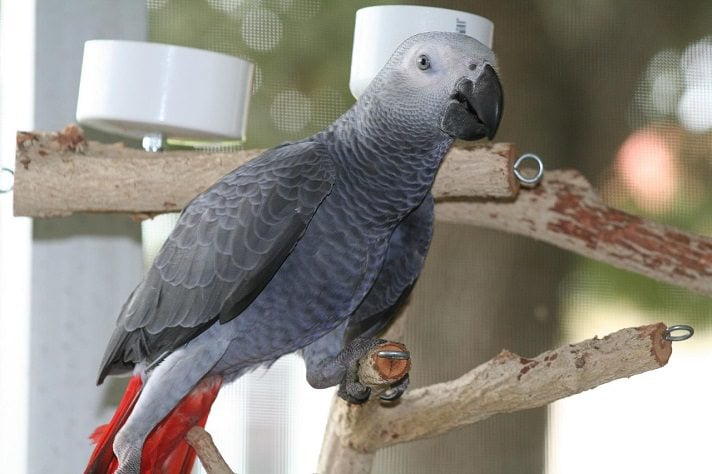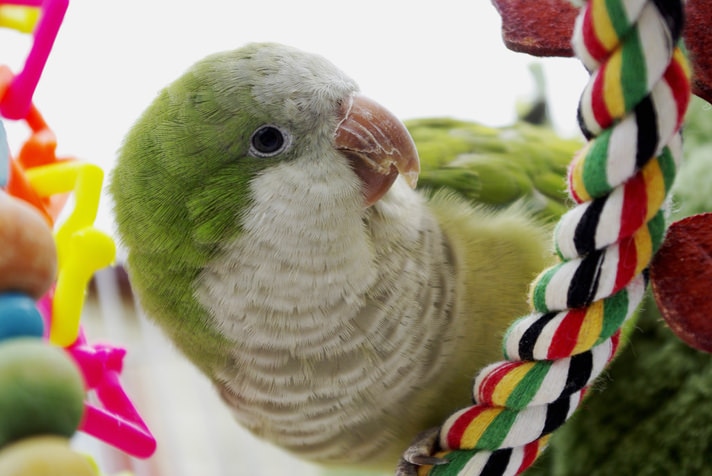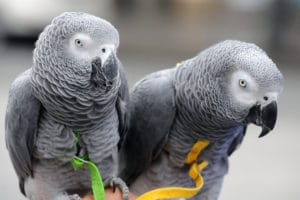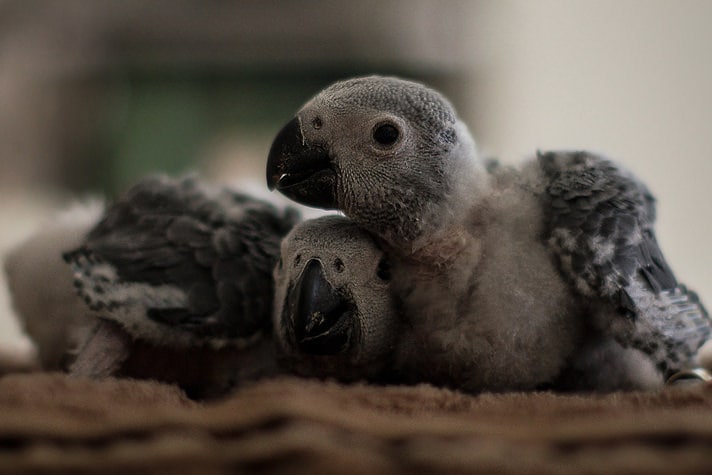Considering how difficult extreme temperatures can be on pet birds, does that mean there’s an ideal temperature range?
“Yes,” says North Carolina avian veterinarian, Gregory Burkett, DVM. “In my experience, most pet birds’ comfort range is between 65 and 80 degrees Fahrenheit. They can withstand a much broader range, however, of 40 to 90 degrees Fahrenheit.”
Last winter, when his bird store lost power, the facility dropped to 42 degrees Fahrenheit for three days with no damaging effect on any of the birds.
“Even babies that were still in brooders seemed happy and were playing and eating,” Dr. Burkett says.
Whether or not your bird is more comfortable with temperatures on the lower or higher end of the range depends on a number of factors.
- Access to moving air. If your bird has access to moving air, it can usually withstand a little more heat (often as high as 90 degrees Fahrenheit) than if the air is stagnant. Two ways you can provide air movement for indoor birds is to place bird cages next to an open window (so that it can feel the breeze) or place a fan close to the cage.”This allows your bird to get air to cool its respiratory tract so that its core temperature doesn’t rise,” explains Larry Nemetz, DVM, an exotics-only veterinarian in California.If your birds are in outdoor flights, they may be able to handle heat up to the mid 90s, especially if there’s good ventilation, and if the birds can fly to get the air moving, he added.
- The bird’s weight. Another factor is the bird’s weight. Very skinny birds have less “meat” on their bones to help them keep warm and may not be able to handle as chilly temperatures as a bird that’s a little plumper. Overweight birds, on the other hand, are prone to overheating and do not function as well in very hot weather compared to lower weight birds.”The fatter the bird, the less ability it has to cope with heat and the lower the temperatures necessary to cause heat stress,” says avian veterinarian Gregory Harrison, DVM. “Birds cool themselves down by breathing and expanding their air sacs and fluffing their feathers out and increasing the conduction of heat through skin and out through the feathers. Obese birds can’t do this as well. The fat layer on their body acts as insulation and compresses the air sacs so they can’t get any air in and out.”If an obese, indoor parrot was suddenly put outside in 85 degrees Fahrenheit weather, that bird would probably suffer heat stress, Harrison says. However a lean parrot could probably stand 90 or 95 degrees Fahrenheit without any problems.
- The usual temperature in which they live. A third factor is what environmental temperature the bird is used to. Birds can tolerate extreme cold or hot weather if they are allowed to gradually adjust, or acclimate, to it.”People who have outdoor jobs don’t feel the heat or cold as harshly as those who are almost always indoors with furnaces or air conditioners. Our birds can also adapt, and there are aviculturists with outdoor aviaries who report that their birds do just fine even when there is snow on the ground,” notes Missouri veterinarian, Julie Burge, DVM.
One such aviculturist is Katy McElroy. She has been breeding cockatoos in her indoor/outdoor aviary in northern Ohio for more than two decades. In the winter, the indoor “building” part of the aviary is heated to just 38 to 40 degrees Fahrenheit. This is connected to a larger, unheated outdoor flight. During the daytime, the birds can choose to spend their time in the indoor or outdoor sections of the aviary.
“Most of the birds will spend a few hours outdoors on sunny days all winter long,” McElroy relates. “The Australian cockatoos enjoy playing in the snow and will venture outdoors even when the temperature dips to single digits.”
Most parrots, even those from the tropics, can handle short periods (two or three days) of extreme cold —if they have been allowed to become gradually acclimated to it, McElroy says. However, if your parrot has spent its entire life in your 70-degrees Fahrenheit home and you suddenly put it in an outdoor flight in 20 degrees Fahrenheit weather, that bird would probably get hypothermia. Your bird would also be in trouble if you out of the blue one day put it outdoors on a 95 degrees Fahrenheit day. Sudden temperature changes can be very stressful to pet birds. The bottomline, Nemetz says, is you should not allow your bird’s environmental temperature to change more than 10 to 15 degrees within a 24-hour period.
“Birds can handle almost any temperature, but they need time to adjust,” he stresses.
This means if you’re going to let your birds play in the snow this winter, you need to gradually get them used to cooler and cooler temperatures. You might start putting your bird outside for a few hours each day in the fall as temperatures get cooler and cooler. By mid-December, your bird will probably have built up enough of a downcoat that it can play with you in the season’s first snow.
Posted by: Chewy Editorial
Feature image: panupong1982/iStock/Thinkstock
Share:
